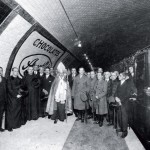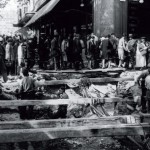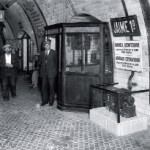
Urban underground electric trains reached Barcelona ninety years ago, on 30th December 1924, to provide a solution to a problem which arises at some point in all advanced urban societies: how to improve mobility for an increasing population concentrated in growing areas while freeing space in streets overwhelmed by overground transport.

At some stage we should look closely at the signs of stations and ask ourselves what those words mean, because they are full of historic, geographical, and personal references.

On 30 December 1924, Barcelona’s first metro line was inaugurated; Gran Metro, predecessor to today’s Line 3, ran between Plaça de Lesseps, in the Gràcia neighbourhood, and Plaça de Catalunya. The new means of transport experienced a faltering start, low usage rates putting the company in a difficult financial position.

Tunnels and stations in disuse, old artistic tiling, advertising from past eras, murmurs of water and even ghost legends tell the story of the Barcelona metro, through a serie of guided tours.

One of the most important traffic arteries in Barcelona, Via Laietana, hides in its underground two metro stations, one of which never getting to be operational

On 30th December 1924, the first metro in Barcelona started to work from Plaça de Catalunya to Passeig de Gràcia. Thus is how we start the routes through the metro, which are being held on the occasion of the 90th anniversary of this transport.

Ninety years is long life to live. In the case of the Barcelona metro, it has been a life of growth, maturation and renewal. The 21st century has seen this means of transport once again transform itself.









